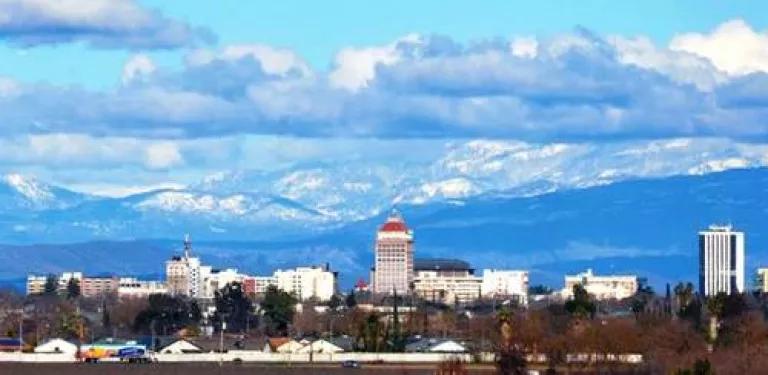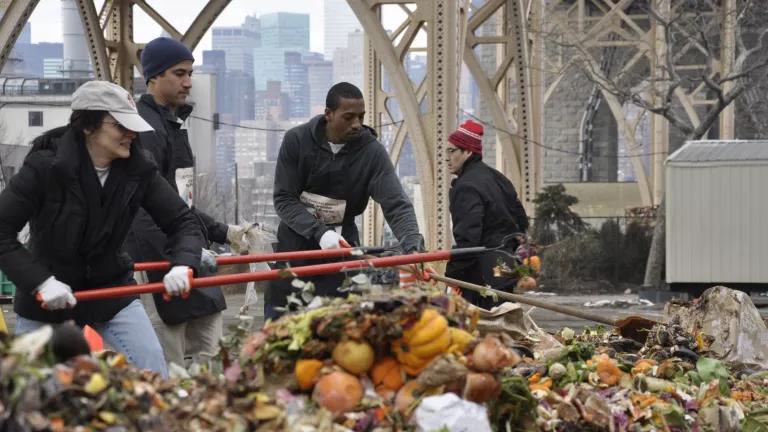As California’s sustainable communities legislation, SB 375, is implemented across California, we thought it would be a good idea to hear from folks developing local plans
throughout the state. This week we spoke with Wilma Quan, Urban Planning Specialist for the City of Fresno, CA, one of the areas poised to adopt their vision for a more sustainable region in 2013. The San Joaquin Valley represents nearly 11% of California’s population and is its fastest growing region, expected to absorb 25% of California’s growth by 2050. To accommodate this growth in a way that can help to clean the air and save farmland, the Fresno County Council of Governments will vote to adopt a Sustainable Communities Strategy next October. We’ll continue to feature regional leaders as they discuss why better land use and transportation planning is necessary for improving air quality and revitalizing their communities.
You mentioned your work focuses on downtown revitalization in Fresno. What are your specific responsibilities? What are you trying to accomplish?
I am currently managing two projects. The first is the Downtown Plans and Code project—a $2.7 million contract to create a new community plan, specific plan, and form-based code for 7,200 acres of Fresno’s urban core. The City’s goal is to incentivize development in Fresno’s urban core by making it easier to develop downtown than on the fringes of the City. We are putting policies, procedures, and design criteria in place which will allow most urban uses by right, and getting environmental clearance out of the way, creating “shovel-ready” parcels downtown. Developers with projects consistent with the new plans and code will be more easily able to obtain a permit than they would have been historically. Our goal is to increase density downtown and along major corridors within the 7,200 acres, encouraging infill development.
My other project is the High-Speed Rail (HSR) Station Area Master Plan project for approximately 500 acres within downtown Fresno. This will be a Master Plan level project surrounding the first HSR station in the nation, slated to be constructed in Fresno’s downtown. The City currently has a Request for Proposals out for consulting services that will focus on financing and economic opportunities around the HSR station. The Master Plan will also help to fine tune the physical environment around the station by providing multi-modal circulation, transit integration, way-finding and development opportunities within the station area.
Why is Fresno focused on downtown revitalization?
I think every city defines itself by its downtown. In the four years that I’ve been here, there has been a huge change in downtown, with revitalization efforts really taking off. Developers know that the city is investing in its downtown, providing assurance that the city wants downtown to be successful. We’re already seeing an increase in development downtown, and once the Downtown Plans and Code project is finished, I think it will take off even more.
Historically, Fresno hasn’t had design criteria in place. The proposed form-based code will allow the city to establish design criteria compatible with the existing historic fabric of Fresno’s urban core, thus protecting and building upon these precious neighborhoods. The form-based code will promote pedestrian-friendly, “eyes on the street”, urban development with transit connectivity, which will include everything from bikes to Fresno’s new BRT system to the proposed High Speed Rail station.
In creating the Downtown Plans and Code we looked at the city as a whole and really focused on downtown as the activity center of the entire city. Fresno is the fifth largest city in the state, and our goal is for downtown Fresno to be the 24-hour entertainment center in the San Joaquin Valley.

Source: Heather Heinks
Why is strengthening downtown good for Fresno? Why is it good for California?
We all know what happens when cities sprawl, there is a cost above and beyond installing and maintaining the infrastructure necessary to support suburbia. One of those costs is the cost to the urban center. Fresno’s urban core has suffered as a result of bustling suburban development. Historically, crime and vacancy rates have increased in Fresno’s downtown as businesses relocated from the City’s center to the suburban shopping centers. The City’s downtown revitalization efforts will help to refocus development in downtown and hopefully be advantageous to the City as a whole.
In addition, with the development of the future high-speed rail station downtown, Fresno will become more easily accessible to other cities within California. The efficient movement of goods and people will be key for creating a thriving local and state economy. As part of the HSR Station Area Master Plan project, we are looking to create a detailed financing plan including a real estate development and value capture strategy. In addition, the Amtrak station, BRT, City bus, Greyhound, and other forms of transportation will all have lines or transfer stations within walking distance to the proposed HSR station, making it easy to connect to other parts of Fresno and smaller cities within the region.
How did Fresno’s downtown area end up in its current state?
Cities and their development patterns have evolved over time. There have been periods where downtowns were flourishing in most cities and then periods where suburbia was hot for a while. The history and annexation patterns of the City of Fresno coincide with these development patterns. Every time a suburban mall outside of downtown developed in Fresno, businesses that were located in downtown relocated to these suburban shopping centers, creating further decay and vacancies within the City center. There wasn’t a cohesive plan in place for the urban area, which is why we are working to get the Downtown Plans and Code project finalized to promote infill development and establish parameters for this development.
What has changed that is giving Fresno this new focus?
Incentivizing revitalization in Fresno’s urban core has been the main focus of Mayor Ashley Swearengin’s administration since she took office in January 2009. Once in office, she put a team in place to update the City’s zoning ordinance, which is over 50 years old. We are making certain that development proposed for Fresno’s urban core meets established urban design criteria, is pedestrian friendly, and makes the most use of Fresno’s wealth of existing parking spaces. The new form-based code is also not just about the buildings, but the entire built environment, including the space between buildings and therefore includes street trees, sidewalks, pedestrian and bike friendly streets.
If you were wildly successful, what would downtown Fresno look like in 20 years? What would have changed?
In 20 years Fresno will be a bustling metropolis in the center of California. It will be a destination City, as well as a City where people are raised and choose to stay to raise their own families. It will continue to be a very diverse City with a wide range of employment choices for everyone. Downtown Fresno will continue to flourish and will be the place to live in the San Joaquin Valley for those who want urban living.
The state is engaged in a process to implement SB 375, the Sustainable Communities and Climate Protection Act of 2008. How can this process be brought to bear to help you achieve your goals?
It is hard to imagine our region meeting the goals established within SB 375 without increasing densities and infill in downtown Fresno. The goals outlined in SB 375 are in line with the goals and objectives within the Downtown Plans and Code. In addition, my understanding is that SB 375 offers an improved environmental review process for projects that are within the vicinity of transit stations. Since much of downtown Fresno would qualify as a Transit Priority Area under SB 375, we believe that the Sustainable Communities Strategy Fresno COG is poised to adopt next October may facilitate implementation of our Downtown Plans.
To learn more about Fresno’s Fresno COG’s efforts to develop their sustainable communities strategy or to get involved, visit their website for information about upcoming public meetings.



